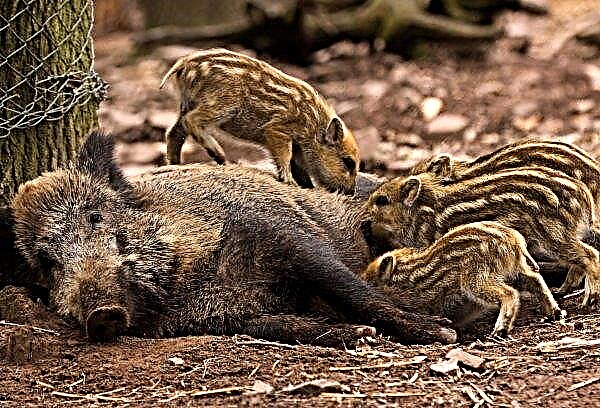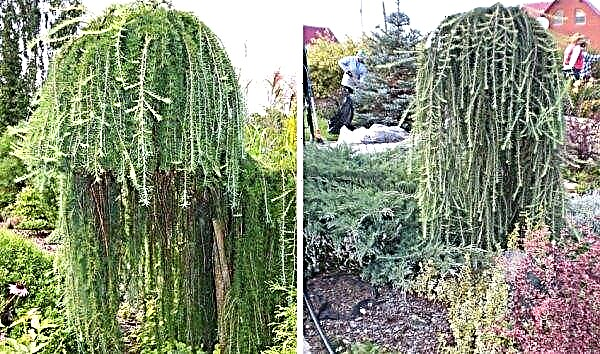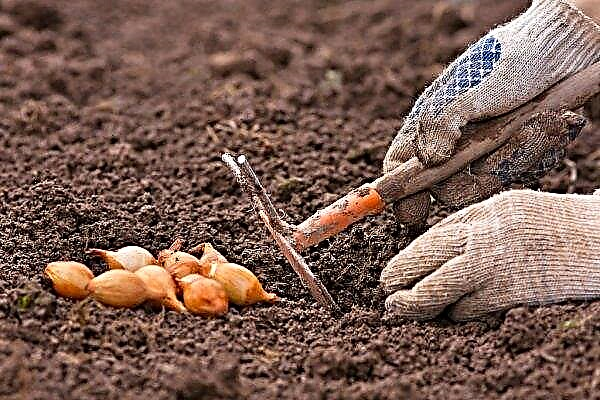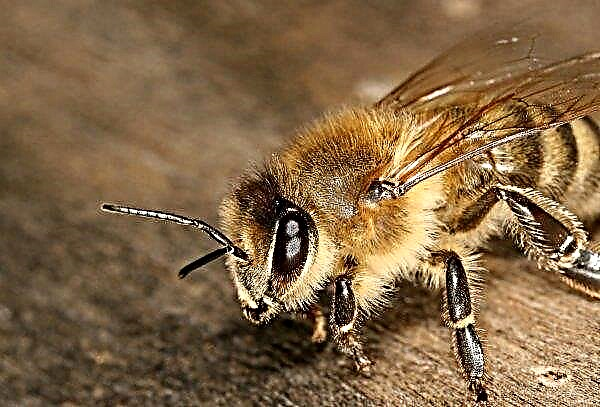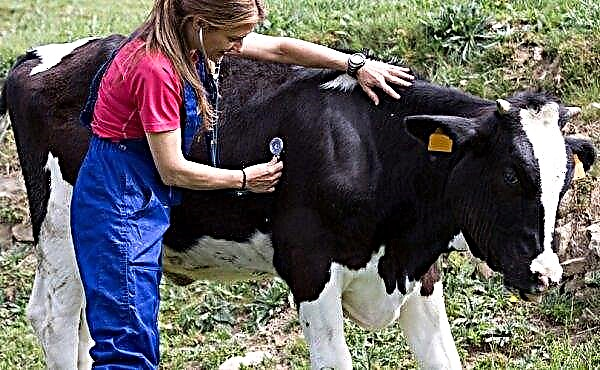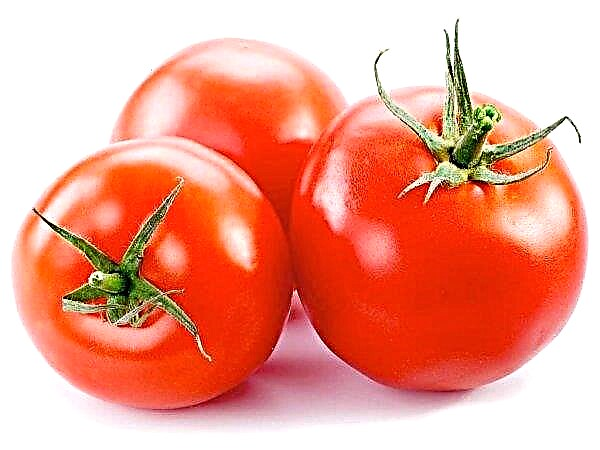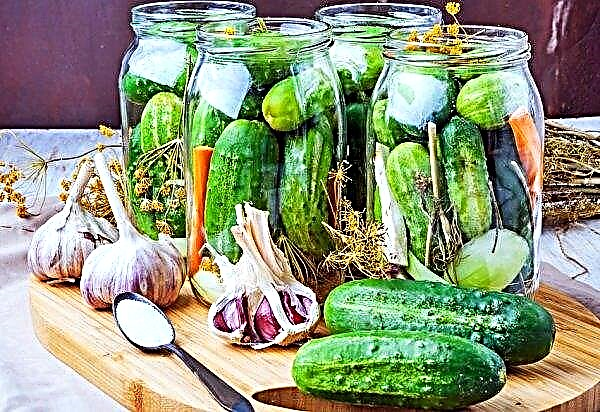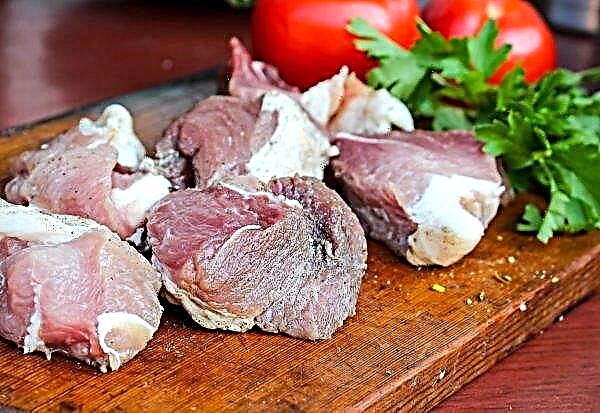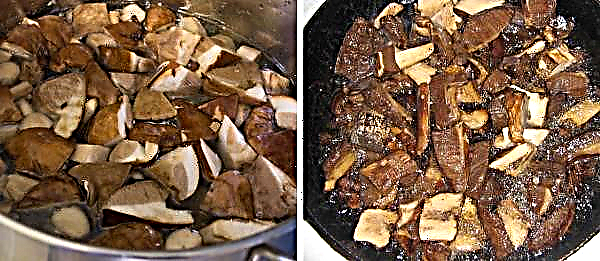The melon variety Slavia will surely appeal to all lovers of the late-ripening fruits of this culture, because the plant is successfully grown both in open areas and in the covered ground of greenhouses, always bringing a tasty and juicy crop. What kind of varietal characteristics this culture has and what you should know about the features of its planting and further cultivation - read on.
History of selection of varieties and main regions of cultivation
The melon variety Slavia was bred back in 1996 by breeders of the All-Russian Research Institute of Rice, Krasnodar. However, in the State Register of Breeding Achievements of the Russian Federation, a new melon came only in 2002 and was zoned in the North Caucasus region. Today, the variety is successfully grown not only in Russia, but also in the territory of neighboring states, stably bringing delicious and fragrant fruits.
Did you know? The most expensive melon variety in the world is the Japanese Yubari King, grown in a small area of Japan. Only one pair of incredibly tasty fruits is estimated at auction at thousands, and sometimes tens of thousands of dollars.
Description and characteristic
Any characteristic of a fruit plant can become decisive in the situation of choosing one or another variety, therefore, when planning to plant Slavia melons on your plot, you should carefully study not only the external data of the fruits, but also their taste, chemical composition and ripening time.
Appearance
Slavia is a late-ripening, climbing variety of melons. The length of the main shoot often reaches a two-meter mark, but the side shoots are slightly shorter. Leaf plates - green, relatively large and slightly dissected at the end. Flowering - faint yellow, medium profusion. Fruits - rounded, yellow-green in color, with a coarse, medium-rough coating. The surface pattern of the peel is continuous, small-framed, and in the context the skin is pure white and bends well. Inside is a medium-sized seed nest, loose, with three placentas located on the walls. The pulp of the melon Slavia is medium thick, white, dense and juicy, with a natural melon aroma. The weight of one melon reaches 1.2–3.2 kg.
The surface pattern of the peel is continuous, small-framed, and in the context the skin is pure white and bends well. Inside is a medium-sized seed nest, loose, with three placentas located on the walls. The pulp of the melon Slavia is medium thick, white, dense and juicy, with a natural melon aroma. The weight of one melon reaches 1.2–3.2 kg.
Taste and smell
The taste of melons of the described variety deserves the highest praise, because it perfectly combines high sweetness and aromatic aftertaste. Moreover, the taste and aromatic qualities of the removed fruits retain their characteristics for a month after harvest, perfectly transferring transportation and long-term storage.
Important! In addition to the beneficial properties of melon, it is always worth considering the possibility of a negative effect of its components on the well-being of a person. First of all, this applies to people suffering from problems with the gastrointestinal tract, because of which they will either have to eliminate the melon from their diet altogether, or use it in limited quantities and separately from the main food.
Chemical composition
The dry matter content in the fruits of Slavia reaches 8.1–10.0%, with a total sugar volume of 7.9–8.6%. The calorie content of melons is average for the fruits of this culture and is approximately 33–35 kcal per 100 g of pulp. The ratio of BJU (proteins / fats / carbohydrates) is 0.6 g / 0.3 g / 7.4 g, and as for the vitamin-mineral composition, the first thing to do is to distinguish the following components:
- vitamins A, C, E, D, H, K, group B;
- macronutrients: calcium, potassium, magnesium, sodium, phosphorus, chlorine;
- trace elements: iron, iodine, copper, manganese, zinc, silicon.

Small amounts in Slavia melon contain saturated fatty acids and polyunsaturated fatty acids, better known as Omega-3 and Omega-6. Like other melon varieties, the fruits of Slavia have a significant beneficial effect on the human body, which is primarily expressed in:
- improving memory and combating depressive states (folic acid is responsible for this);
- increasing the body's immune forces when exposed to colds and viral ailments (vitamin C);
- improving the condition of hair, skin and nails (silicon);
- increased hemoglobin and the successful fight against anemia (iron, which is much more in the pulp of fruits than in fish or milk).
Important! The chemical composition and caloric content of specific fruits are directly affected by the conditions of their cultivation and the use of nutrients, so all the values given are averaged.
In addition, do not underestimate the role that magnesium is present in melons, because it positively affects the state of the cardiovascular system and is indispensable for the heart muscle.
Video: the benefits of melon for the body
Ripening time
From the appearance of the first seedlings to the removable ripeness of the fruits of the described variety, an average of at least 82–111 days elapses. That is, approximately three months after sowing the seeds, you can already harvest the melons (starting in mid-September and continuing to harvest until October). With proper care from one hectare receive about 200-300 quintals of universal fruits.
Advantages and disadvantages
- The list of advantages of the plant includes its following features:
- endurance and unpretentiousness in leaving;
- good indicators of drought and disease resistance;
- high taste and marketability of the fruit;
- good keeping quality and excellent transportability of the harvested crop.
We recommend that you familiarize yourself with other varieties of melon:
How to choose a ripe melon when buying
When choosing fruits, they are always guided more by their appearance, forgetting to pay attention to such characteristics as aroma and “sound” of the selected specimen. Of course, uniform color, the absence of signs of decay and mechanical damage are important signs of quality, but not the only ones, therefore, If you are going to acquire this or that fruit, pay attention to:
- aroma (for quality melons it is always sweet and well palpable);
- skin density (it should be moderately elastic and not give in to dents);
- the sound of patting (it is always deaf in ripened fruits).
 Only by evaluating all these criteria together can we talk about the quality of the melon and its optimal maturity
Only by evaluating all these criteria together can we talk about the quality of the melon and its optimal maturityCultivation agricultural
Melon cultivation Slavia begins with the selection of a suitable growing place for it, but in order to get a plentiful and high-quality melon crop, it is important to organize proper care of the plant. Each action has its own characteristics, most of which are associated with the requirements of the variety.
Did you know? The largest melon in history was grown in 2009 by Austrian farmer Christopher Schieder. Her weight was a record 47.5 kg.
Dates and place of landing
The timing of planting melon Slavia depends on the region of cultivation and type of planting. So, when sowing seeds for seedlings, it will be possible to transplant grown seedlings in the garden no earlier than the end of May. The best time for home sowing is in mid-April, maintaining the temperature in the room at + 23 ° C and adequate lighting for 12 hours. As soon as the first shoots appear, the temperature can be lowered to + 21 ° C, and after 25–35 days transplanted to an open bed. If you are going to sow the seeds immediately in open soil, then it is worth considering the most suitable time for different growing regions:
If you are going to sow the seeds immediately in open soil, then it is worth considering the most suitable time for different growing regions:
- for the forest-steppe zone, this is May 5–15;
- for the steppe — the end of April or mid-May;
- for western territories (including northern ones) - May 20 – June 5.
Since the climatic features of a particular region are different and it is difficult to guess with the exact calendar date for sowing seeds, it is more reasonable to focus on the ambient temperature: as soon as the threat of return frosts passes, the air warms up to +16 ° C comfortable for the melon, and the soil temperature rises to +12 ° C - you can safely begin to complete the task by pre-selecting a sunny and closed from the cold wind plot in the south or southwest territory. Beans, corn, cabbage, winter, perennial herbs and potatoes will be good predecessors for Slavia, but melons themselves in the same place for two years is better not to plant
Beans, corn, cabbage, winter, perennial herbs and potatoes will be good predecessors for Slavia, but melons themselves in the same place for two years is better not to plant
Sowing pattern and depth
Plants of the Slavia variety can be sown in exactly the same way as other varieties, after digging and leveling the plot. The planting pattern is 70 × 100 (the distance between adjacent holes and rows), and no more than three seeds should be put in one hole. Seeds are deepened into the soil by 2.5–3 cm, laying them on their sides, after which they compact the soil and abundantly water the plantations.
Melon Care
Care for Slavia melon begins shortly after planting on the site and provides for timely soil moisture, fertilizing the crop and loosening the soil, while removing weeds. In regions with more severe climatic conditions, planted melons may need temporary protection from the cold, the methods of organization of which also need to know.
Temporary shelter
Temporary shelter for planted garden crops is the main way to protect them from possible spring cold, especially at night. If the temperature on the street has not yet stabilized and the difference between daytime and nighttime values is palpable, you should install a metal frame over the beds with melons about 50-60 cm high and pull a film or any other material over it (for example, spunbond). With a small number of melons, each seedling can be covered with a cut bottle, but this is a more time-consuming and not so convenient process. It will be possible to remove the used protective shelter as soon as the threat of return frost has passed, and the plants themselves will have time to adapt to new growth conditions.
With a small number of melons, each seedling can be covered with a cut bottle, but this is a more time-consuming and not so convenient process. It will be possible to remove the used protective shelter as soon as the threat of return frost has passed, and the plants themselves will have time to adapt to new growth conditions.
Watering and fertilizer
Adequate soil moisture is an important aspect of Slavia melon care, although the introduction of liquid should be carried out from the time of emergence to the fruit ovary. Watering should be regular, but moderate, mainly by the root method and using water heated in the sun. On average, about 45 liters of liquid are consumed per 1 m² of territory, and the regularity of its application is 3-5 times a week, depending on weather conditions and the level of humidity in the street. A month before harvesting, watering should be completely stopped, avoiding excessive wateriness of the fruits and their cracking.As for feeding melons, then for the first time nutrients are introduced into the soil 2 weeks after planting, using an infusion of mullein or ammonium nitrate dissolved in water. The second time (after another 14 days), the culture can be fed with a mineral mixture of 40 g of superphosphate, 25-30 g of ammonium sulfate and 15-20 g of potassium salt, dissolved in a bucket of water.
A month before harvesting, watering should be completely stopped, avoiding excessive wateriness of the fruits and their cracking.As for feeding melons, then for the first time nutrients are introduced into the soil 2 weeks after planting, using an infusion of mullein or ammonium nitrate dissolved in water. The second time (after another 14 days), the culture can be fed with a mineral mixture of 40 g of superphosphate, 25-30 g of ammonium sulfate and 15-20 g of potassium salt, dissolved in a bucket of water.
Video: feeding melon
Weed control
When sowing on a melon seed plot or transplanting young seedlings of a crop, at first they will be very vulnerable to adverse environmental factors, therefore even the presence of nearby weed plants can have a negative impact on the normal growth and development of the fruit (some of the nutrients in the soil are selected and cover useful plants from sunlight). Therefore, after each watering, as soon as the moisture is completely absorbed into the soil, it is worth loosening the soil in the row-spacings, while removing all the weeds. It is much easier to extract them from the wet substrate, however, when performing the procedure, try not to touch the root system of the culture itself.
Therefore, after each watering, as soon as the moisture is completely absorbed into the soil, it is worth loosening the soil in the row-spacings, while removing all the weeds. It is much easier to extract them from the wet substrate, however, when performing the procedure, try not to touch the root system of the culture itself.
Harvesting
Since the Slavia variety belongs to late-ripening varieties with a long period of fruit formation, it is possible to determine exactly when it ripens by the appearance of melons. On average, it takes about 90-110 days from the moment of planting, so the first ripe melons can be tasted already at the end of August, although mass harvesting takes place in September or even October, which depends on the region and the method of growing the crop.
When harvesting the fruit, they are carefully separated from the lashes, leaving a 5-centimeter stalk. Subsequently, they are sorted by size and maturity level and laid out on shelves in a cool room. In fresh form, the shelf life of fully ripe specimens is 1–1.5 months, so to extend it you will have to remove slightly unripe fruits from the plot, allowing them to reach at home. For a longer storage, up to the next harvest, you have to dry, freeze or process the melon into all kinds of blanks. It is also good in various dishes, so for now there is an opportunity to make maximum use of the crop for culinary purposes.
For a longer storage, up to the next harvest, you have to dry, freeze or process the melon into all kinds of blanks. It is also good in various dishes, so for now there is an opportunity to make maximum use of the crop for culinary purposes.
Variety Slavia is a good example of a tasty, healthy and beautiful melon, as you can see from the annotation to the description. Observing the basic requirements for planting and further care of the turret stands, you protect yourself from any possible difficulties of cultivation, which means you will only have to enjoy the healthy and juicy fruits of this culture.

